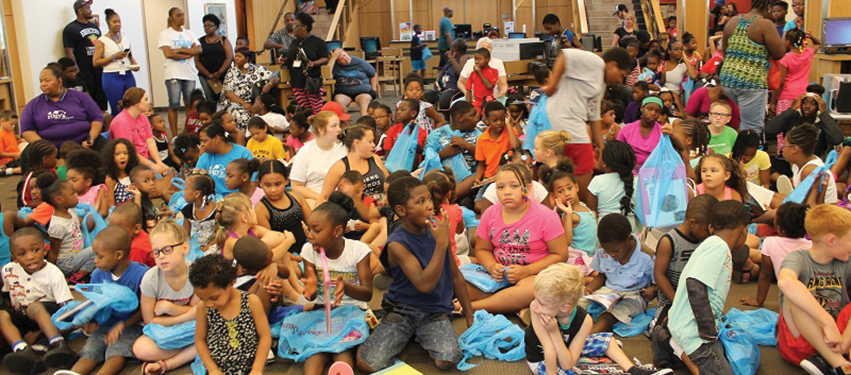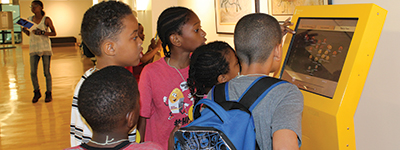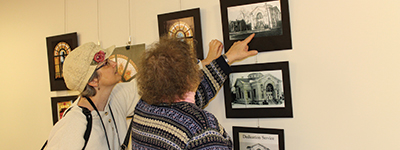
On the dynamic role of the public library in contemporary society
“A library in the middle of a community is a cross between an emergency exit, a life raft and a festival,” writes Caitlin Moran, English journalist, author and broadcaster. “They are cathedrals of the mind; hospitals of the soul; theme parks of the imagination. On a cold, rainy island, they are the only sheltered public spaces where you are not a consumer, but a citizen instead.”
This definition of a library is amusing, eclectic and definitely iconoclastic—words that would not have been previously used to describe a quiet public place for books and reading, or any other public or governmental institution, for that matter. Yet these words accurately capture the ongoing dynamic role of the public library in contemporary society, both in America and around the globe.
The recently completed election season may call into question the previous roles of the public sector in today’s world. And certainly the technology revolution of the late 20th and early 21st centuries may likewise call into question the value of and need for public libraries in our communities. Despite these twin tremors, the library that Ms. Moran so colorfully describes is very much alive and well in cities and towns everywhere, including our own. Libraries remain the quiet public servants they have always been, since their arrival on the scene in the late 19th century.
Cathedrals of the Mind
The idea of free and accessible public libraries, where motivated citizens could better themselves through self-education and intellectual pursuit, has not always been with us. Many libraries at the turn of the previous century were either private (with little or no public access) or connected to institutions of higher learning, open only to enrolled students. Andrew Carnegie, the Scottish-American industrialist and prominent philanthropist, was one of several individuals who helped promulgate public libraries across the country. Beginning in 1883 and continuing for the next 40 years, Carnegie funded the design and construction of free-access public libraries throughout America, as well as in several foreign countries. By the time his program ended in 1929, over 2,500 facilities had been completed around the world. More than 1,600 of those public libraries were built in the U.S., including the exquisitely neo-classical Lincoln Library on Peoria’s south side.
This early wave of modern public libraries was populated mostly by beautifully-bound hardcover books, together with some newspapers and high-brow periodicals. As the 20th century moved on, these books were joined by softcover mass-market books, popular periodicals and long-playing phonograph records (and some reel-to-reel movies, too). In turn, those additions were later joined by audio cassette tapes, VHS tapes, CDs and DVDs. Today, all of these physical media can still be found in a public library, coexisting happily with computer stations and websites that offer books, periodicals, music and movies in the latest digital formats.
Key to each of these technological iterations is the fact that the public library did not capriciously abandon or discard the previous media when adopting its successor. Instead, it lovingly and respectfully guarded both the old and the new, thus serving patrons of all generations, and providing a rich compendium of cultural history. In 2015, for example, the Peoria Public Library still circulated nearly 1.1 million physical media items, while accommodating over 100,000 digital ones.
Life Raft to the Past
In addition to the statistics mentioned above, the Peoria Public Library answered nearly 55,000 questions posed by patrons in 2015. Many of those queries concerned something local: a lost relative or friend, the history of a particular building in a transitioning neighborhood, or the details of an event from Peoria’s past. Certainly, this points to another essential purpose for public libraries in a community—namely, as guardians of local history and culture. In this role, libraries are perfectly poised to serve as that guardian for all future generations, while most governmental institutions are preoccupied with other, more global issues and concerns.
Not a Consumer, But a Citizen
In his two seminal works, The Great Good Place (1991) and Celebrating the Third Place (2000), urban sociologist Ray Oldenburg suggests the critical importance of “Third Places” to a society’s health and well-being. If the “First Place” is home and the “Second Place” is work, then the “Third Place” is a public venue where people can put aside their daily concerns and simply enjoy the company, conversation and activity around them. Third Places “host the regular, voluntary, informal and happily anticipated gatherings of individuals beyond the realms of home and work.” They are essential for any community’s social vitality and longevity.
Public libraries are the quintessential Third Places for the 21st century. In an earlier era, libraries may have been viewed as venues where silence ruled, and patrons quietly read or selected books for borrowing. That quietude—and the gentleness and humility it implies—is still a respected aspect of public libraries. But added to that is a new vibrancy and dynamism as hubs for all manner of community engagements. In 2015, for example, the Peoria Public Library and its five community-focused branches booked meeting-room space for more than 7,000 events, with over 30,000 attendees.
A stellar example of both the community center and local history guardianship roles of a public library came on November 20, 2016, when Peoria’s North Branch Library premiered a digitally-restored version of a 1960s film about our city entitled Peoria, Pledged to Progress. Serendipitously discovered in the archives of the Main Downtown Library, this film drew a completely unexpected, standing-room-only crowd of well over 200 locals.
A Sheltering Space
As noted above, a public library is the perfect repository for a community’s history, culture and cherished artifacts. This guardianship role, in fact, extends to all the values and tenets that a modern democratic society holds near and dear. Thus, a public library also serves as a necessary sheltering space for a community—a neutral home for all hearts and minds, where all viewpoints and philosophies are welcome and warmly embraced. In 2016, Peoria Public Library’s “Peoria Reads” program spotlighted the book Dreamland: The True Tale of America’s Opiate Epidemic. This program included a series of thoughtful, respectful, yet frank community dialogues about the opiate issue and its serious consequences for the Peoria area.
 The Library’s Green Thumb
The Library’s Green Thumb
If libraries represent a terrific example of one of Oldenburg’s Third Places in our communities, they also embody another powerful part of contemporary society; namely, the desire to be as green and sustainable as possible. What could be greener than a single store of books, resources and buildings that get recycled each and every day by all the citizenry? And what could be more sustainable than a public facility that is owned and used by everybody, all the while encouraging a tight-knit and closely-connected community?
Hospital of the Soul
Perhaps the ultimate worth of a public library—as a public institution that belongs to everybody—does spring from that earlier paradigm as a venue for quiet reading and study. Yes, libraries are now dynamic places for a panoply of important community activities and gatherings. Yes, they preserve our history and culture for all who will come after us. But a public library remains today what it has always marvelously been: a gentle place where thinking is nurtured, ideas are king and the human soul can soar. iBi
Leann Johnson is director of the Peoria Public Library. Edward J. Barry Jr. is president of the Peoria Public Library Board of Trustees and a principal at Farnsworth Group. For more information, visit peoriapubliclibrary.org.

